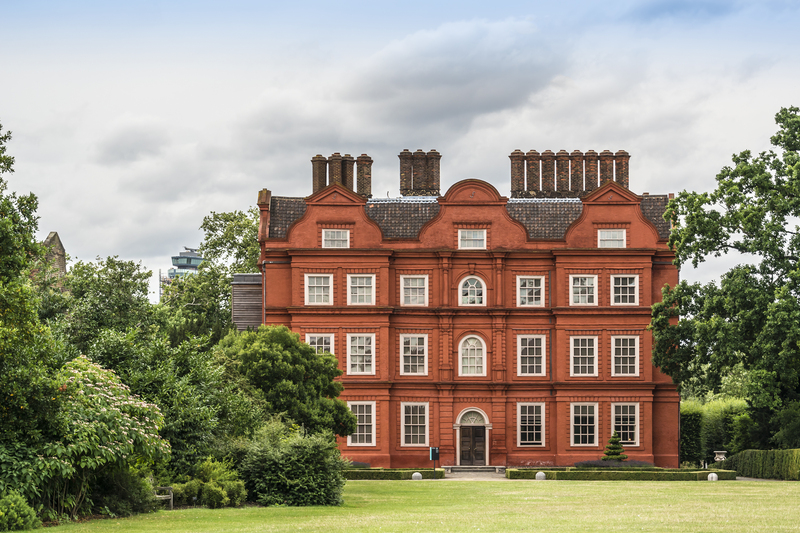Bringing Light to Darkness: Shady Areas and Evergreen Climbers
Posted on 25/05/2025
Bringing Light to Darkness: Shady Areas and Evergreen Climbers
Gardens, with their vibrant colors and flourishing vegetation, often face challenges when it comes to shady areas. These areas naturally resist growth due to limited sunlight, posing a unique challenge for gardening enthusiasts. However, leveraging the beauty and resilience of evergreen climbers can transform these spaces, bringing light to darkness.
Understanding Shaded Areas
Before we delve into the solution, it's crucial to understand what constitutes a shady area. Such areas typically receive less than four hours of direct sunlight. This limited exposure affects plant growth, making it hard for many species to thrive. Despite this, some plants are adept at flourishing in low-light conditions, with evergreen climbers being a perfect example.
Types of Shade
Understanding the nuances of shade can help you identify the best plants for these areas:
- Full shade: Areas with no direct sunlight, often found beneath dense tree canopies or the northern side of buildings.
- Partial shade: Locations that receive filtered or dappled sunlight, usually resulting from sunlight filtering through branches.
- Light shade: Zones that garner a few hours of sunlight, often in the morning or late afternoon.

The Beauty and Benefits of Evergreen Climbers
Evergreen climbers are the unsung heroes of shady gardens. These plants not only fill vertical spaces with lush greenery but are also renowned for their adaptability and low-maintenance needs. Incorporating evergreen climbers into shaded sections of your garden ensures year-round color and interest.
Advantages of Evergreen Climbers
- Year-round interest: Unlike deciduous plants, evergreens retain their foliage all year, providing consistent visual appeal.
- Wildlife habitat: Many climbers offer shelter and food for birds, insects, and other creatures.
- Vertical growth: Climbers make efficient use of space, turning vertical areas into lush landscapes.
- Low maintenance: Once established, many climbers require minimal care, making them ideal for busy gardeners.
Top Evergreen Climbers for Shady Areas
Below is a list of versatile evergreen climbers perfectly suited for shaded spaces. Each species has unique characteristics that contribute to the lushness and vitality of your garden.
1. Ivy (Hedera spp.)
Ivy is a classic choice for shady gardens. Known for its vigorous growth and ability to cover large areas, ivy can thrive in almost any condition. Aside from its aesthetic appeal, ivy also provides a habitat for wildlife, making it an eco-friendly option.
2. Climbing Hydrangea (Hydrangea anomala petiolaris)
While not evergreen everywhere, in milder climates the climbing hydrangea retains its foliage year-round, offering lush greenery and stunning white flowers. This climber has an attractive peeling bark, adding beauty even in the non-flowering season.
3. Star Jasmine (Trachelospermum jasminoides)
With its glossy leaves and sweet-scented white flowers, Star Jasmine is an enchanting choice for shady areas. Its vines are a delight to behold, draping elegantly over trellises and pergolas, providing both shade and fragrance.
4. Evergreen Clematis (Clematis armandii)
Famed for its robust nature and fragrant flowers, evergreen clematis offers a delightful mix of form and function. The glossy leaves and fragrant white blossoms can transform any shaded area into a paradise.
5. Euonymus (Euonymus fortunei)
Euonymus is a popular choice due to its adaptability and variegated foliage. It creates striking contrasts, adding color and texture to darker corners of your garden and offering noise reduction benefits in urban areas.

Care and Maintenance of Evergreen Climbers
While evergreen climbers are generally low maintenance, a bit of care can enhance their beauty and longevity. Here's how to ensure your climbers remain healthy and vibrant:
Soil and Planting
Most climbers prefer well-drained soil. When planting, incorporate organic matter to improve soil structure. Ensure that your plant's roots are secure and the soil is compact enough to support growth.
Watering
While climbers are typically drought-resistant once established, regular watering is critical during the first growing season. Consistent moisture helps roots to establish, enabling plants to develop strength and resilience over time.
Pruning
Regular pruning helps maintain the shape and control the growth of climbers. Cutting back old or dead growth encourages new shoots, leading to fuller and healthier plants.
Feeding
A spring boost with a balanced fertilizer can invigorate climbers, encouraging them to produce more foliage and flowers. Avoid over-fertilizing, which can lead to excessive foliage at the expense of flowers.
Design Tips for Integrating Climbers in Shady Areas
To make the most of evergreen climbers, consider the following design tips:
Create Vertical Gardens
Use walls, fences, and trellises to create striking vertical landscapes. By maximizing vertical areas, you can bring lush vegetation to otherwise barren spots.
Layering and Contrast
Combine climbers with different textures and colors for depth and interest. Layering creates a multidimensional look, enhancing both visual appeal and aesthetic diversity.
Incorporate Them with Shade-Loving Plants
Pair climbers with other shade-tolerant plants, such as ferns or hostas, to create a lush, harmonious environment that thrives in low-light conditions.
In conclusion, bringing light to darkness with evergreen climbers provides an opportunity to transform shaded garden areas into vibrant ecosystems. By selecting the right plants and applying strategic care and design, you can enjoy a verdant and dynamic landscape, even in the darkest corners.



